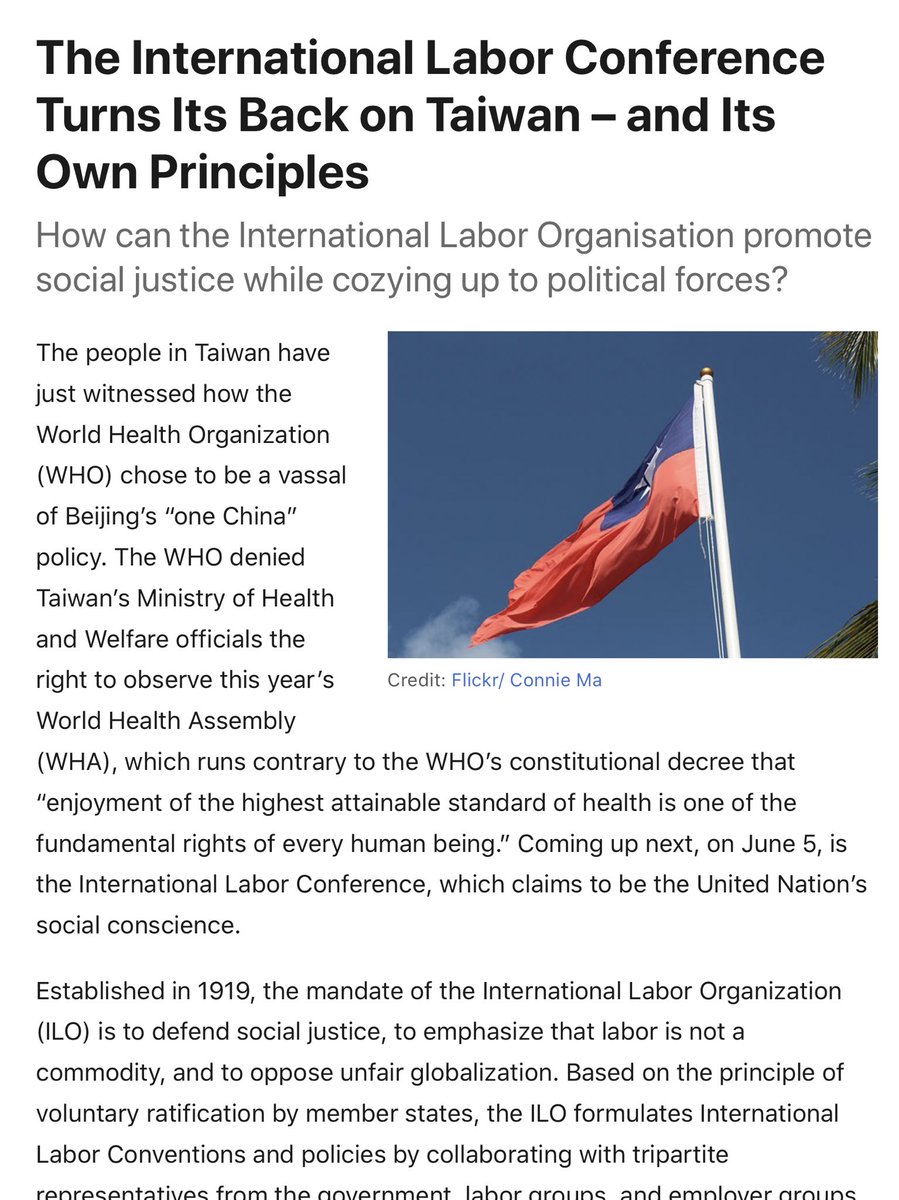Wage earners with an employment contract and protected by social legislation are the main target group of ILO norms.
Many workers are thus excluded from the scope of the Organization like the informal workers in India who make for 92% of the total participating labour-force. https://twitter.com/anshikashukla_/status/1265202932686786560">https://twitter.com/anshikash...
Many workers are thus excluded from the scope of the Organization like the informal workers in India who make for 92% of the total participating labour-force. https://twitter.com/anshikashukla_/status/1265202932686786560">https://twitter.com/anshikash...
The founding principles of the ILO were formulated in 1919 and the Constitution of the Organization begins with this premise: ‘Universal and lasting peace can be established only if it is based upon social justice’, which gives the ILO essentially three filiations.
The promise of social justice was first and foremost a response to the demands of the reformist workers’ movement that came together in the union sacrée during the First World War. At the international trade union conference in Leeds, Great Britain, in 1916, trade union
representatives of the nations that were allied against Germany called for the creation of an international labour organisation, a kind of world parliament in which the social demands of the labour movement would be discussed and examined.
Social Christianity was another inspiration as well as a cornerstone for the foundation of the ILO. Since the publication of the encyclical Rerum novarum in 1891, the social doctrine of the Catholic Church had clearly been based on a demand for justice, taken up and amplified
by the Catholic and Christian workers’ movement. But the ILO was also the direct heir to liberal social reform, some of whose movements had already organised themselves within various international associations.
Until today, the ILO’s recommendations are only indicative and the conventions must be ratified by the national parliaments of the member states. In general, however, states have no interest in ratifying a convention: not only does ratification involve bringing the country’s
legislation into line with ILO rules, it also constitutes a heavy commitment subordinated to an annual supervisory system, constraints that states have been trying to escape.
But India’s record has been most encouraging compared to the other countries when it
But India’s record has been most encouraging compared to the other countries when it
comes to ratifying ILO conventions.
In 1919, the three main social reformist schools of thought agreed on various social goals but their union was also aimed at countering the Bolshevik Revolution and the upsurge of European revolutionary movements.
In 1919, the three main social reformist schools of thought agreed on various social goals but their union was also aimed at countering the Bolshevik Revolution and the upsurge of European revolutionary movements.
The ILO, clearly founded as an ‘alternative to violent revolution’ was in return denounced by the communists, who accused it of betraying the fundamental interests of the working class under the guise of reforming capitalism. Until 1934, the Soviet Union refused to join.
Nevertheless, the USSR and the revolution were ‘useful enemies’ that the reformers could use to advance their social agenda. On his travels, Albert Thomas tirelessly stressed the importance of fighting against poverty in order to prevent revolution.
“From the beginning of 1920, at their second meeting, the members of the ILO’s Governing Body raised the possibility of conducting an inquiry into the situation in Soviet Russia for the stated purpose of disarming the upsurge of revolution by putting an end to the ‘illusions’
of the workers. A Russian section was formed and, during the interwar period, the ILO became a kind of intelligence agency with regard to communism in the USSR. These thoroughly anti-communist activities were reactivated at the beginning of the Cold War.

 Read on Twitter
Read on Twitter


